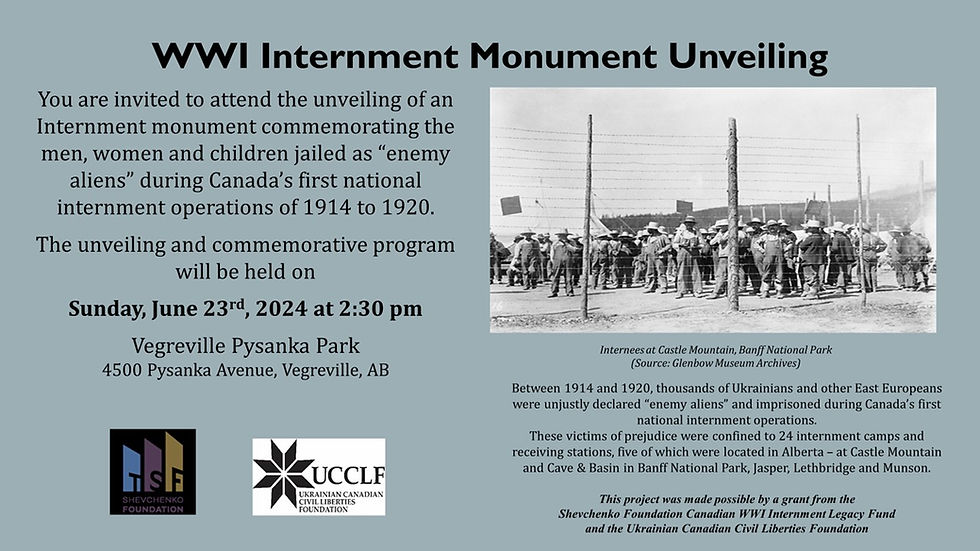Internment Historical Marker Program
- Oct 13, 2008
- 2 min read
UCCLA - October 13, 2008
Efforts to preserve and enhance cultural assets can provide important economic benefits and opportunities for greater social cohesion, reinforcing a common identity and strengthening socio-economic aspirations. By treating our cultural heritage as a capital asset and preserving it via the Internment Historical Marker Program throughout Canada, Canadians can then hold that heritage in trust for future generations. The plaques that have been placed at the internment camp sites across the country serve to mark the spot, make a claim on the history of that part of Canada, remember the victims of the camps, and share the history with tourists and passers-by.
Prior to UCCLF obtaining formal charitable status, its members have worked with the communities in which internment camps operated throughout Canada to install commemorative plaques and statues. These plaques identify the camp and their prisoners and are located at 20 of the 24 camp sites throughout Canada.
Installation of the existing 20 plaques has taken approximately 20 years to accomplish with countless voluntary hours of UCCLF members working with individuals from each community, including municipal and town officials to secure permission from landowners, historical society members to ensure accurate placement of the markers, and generous individuals who have donated the materials for the plaques.
UCCLF members have also worked with Parks Canada to have the trilingual interpretive panels installed at the Cave and Basin site near Banff, Alberta.
Outstanding camp sites include: Eaton, Saskatchewan; Lethbridge, Alberta; Montreal, Quebec; and Halifax, Nova Scotia.
UCCLF is striving to ensure the final plaques are installed in 2014, prior to the 100th anniversary of the opening of the first camp. If you would like to help us accomplish this goal, please Donate Now or Volunteer.



Comments